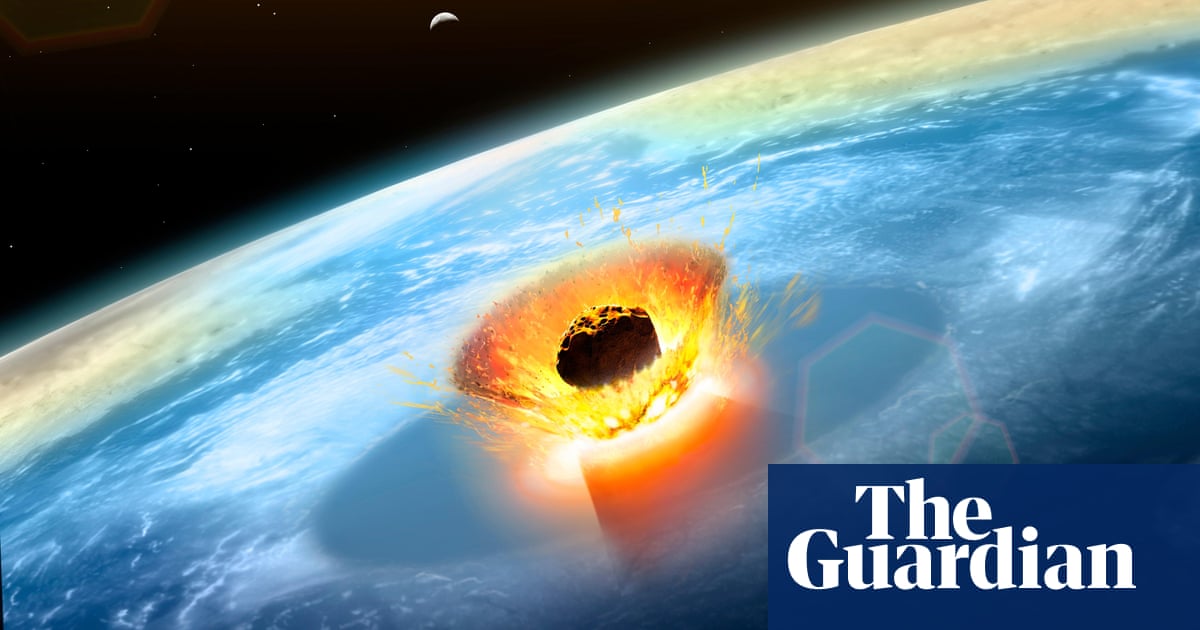When a massive space rock slammed into Earth 66m years ago, it wiped out huge swathes of life and ended the reign of the dinosaurs. Now scientists say they have new insights into what it was made from.
Experts studying material laid down at the time of the event say they have found tell-tale signs to support the idea the Chicxulub impact crater was produced by a carbon-rich, “C-type”, asteroid that originally formed beyond the orbit of Jupiter.
Mario Fischer-Gödde, co-author of the research from the University of Cologne, said the team are now keen to look at deposits associated with an impact some suggest was behind a large extinction about 215m years ago.
“Maybe this way we could find out if C-type asteroid impacts would have a higher probability for causing mass extinction events on Earth,” he said.
Writing in the journal Science, the researchers report how they studied different types, or isotopes, of ruthenium within a layer of material that settled over the globe after the impact 66m years ago.
“This layer contains traces of the remnants of the asteroid” said Fischer-Gödde.
The team chose to look at ruthenium because the metal is very rare in the Earth’s crust.
“The ruthenium that we find in this layer, therefore, is almost 100% derived from the asteroid,” said Fischer-Gödde, adding that offers scientists a way to determine the makeup, and hence type, of the impactor itself.
The team found samples of the layer from Denmark, Italy and Spain all showed the same ruthenium isotope composition.
Crucially, said Fischer-Gödde, the result is different to the composition generally found on Earth, ruling out a theory that the presence of ruthenium and other metals such as osmium and platinum, are down to past eruptions of the Deccan Traps volcanoes.
The team also cast doubt on the possibility that the impactor was a comet, saying the ruthenium isotope composition of the samples is different to that of meteorites thought to be fragments of comets that have lost their ice.
Instead the ruthenium isotope findings tally with the average composition of meteorites from carbonaceous (C-type) asteroids – carbon-rich space rocks that would have formed at the beginning of the solar system, beyond the orbit of Jupiter.
But questions remain about where exactly the asteroid came from before it headed to Earth.
Fischer-Gödde said C-type asteroids can today be found in the asteroid belt that sits between Mars and Jupiter because, not long after the formation of the solar system, Jupiter migrated, scattering asteroids in the process.
As a result, he suggests the ill-fated space rock probably came from there.
“Maybe there was a collision of two asteroid bodies in the belt, and then this chunk kind of went on an Earth-crossing orbit. That could be one scenario,” he said, although he noted there are other possibilities, including that it came from the Oort cloud that is thought to surround the solar system.
Dr Craig Walton of the University of Cambridge, who was not involved in the work, said the research is exciting although in his view it remains unclear whether the impactor was an asteroid or comet.
“Nonetheless, this kind of work is offering us ever more detailed insights into the nature of the objects that have so dramatically shaped Earth’s history,” he said.

Dr. Thomas Hughes is a UK-based scientist and science communicator who makes complex topics accessible to readers. His articles explore breakthroughs in various scientific disciplines, from space exploration to cutting-edge research.








